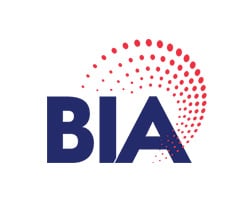Website navigation is a crucial aspect of any website design. It refers to the way users move through a website, finding the content they are looking for, and completing desired actions. A well-designed website navigation can greatly enhance the user experience and increase the chances of visitors staying on the site longer and completing desired actions, such as making a purchase or filling out a contact form.
Website navigation is the process of providing users with a way to move through a website and find the information they need. It plays a crucial role in ensuring a smooth user experience and improving the usability of a website. A well-designed navigation system should make it easy for users to explore a website’s content, find what they’re looking for, and ultimately achieve their goals.
In this article, we will discuss the best practices for website navigation that can help improve the user experience of your website. These practices include designing an intuitive navigation system, using clear and concise labels, organizing content logically, providing search functionality, and optimizing for mobile devices.
Designing an Intuitive Navigation System
One of the most critical aspects of website navigation is its intuitiveness. Users should be able to navigate your website without having to think about how to use the navigation system. Therefore, you need to design your navigation system in a way that is familiar to users and easy to use.
A standard practice is to place the navigation menu at the top of the page, as it is where most users expect to find it. You can also consider adding a secondary menu in the footer of the page to provide quick links to essential pages. Furthermore, you can use dropdown menus or megamenus to provide additional options to users and to organize your content more effectively.
Keep it Simple and Clear
The first and foremost rule of website navigation is to keep it simple and clear. Users should be able to find the information they need with minimal effort. A cluttered navigation menu can be overwhelming and confusing, leading to a frustrating user experience. Therefore, it’s important to keep the navigation menu simple, with only the most important pages displayed. The menu should be organized in a logical and hierarchical order, with the most important pages at the top level.
Use Descriptive Labels
Navigation labels should be descriptive and clear, so users can easily understand what each link leads to. Avoid using generic labels such as “Products” or “Services,” and instead use specific labels that describe what the page is about. For example, “Men’s Shoes” or “Women’s Clothing.” This not only helps users find what they are looking for but also helps with search engine optimization (SEO) by using relevant keywords in the navigation menu.
Use Visual Cues
Visual cues such as icons, images, or hover effects can help users navigate through the website more easily. For example, using an icon of a shopping cart next to the “Shopping Cart” link can immediately convey what the link leads to. Hover effects, such as changing the color or underlining the link when the mouse hovers over it, can also help users understand which links are clickable.
Organizing Content Logically
The organization of your website’s content can significantly affect the user experience. You need to arrange your content logically and group related content together to make it easier for users to find what they’re looking for.
One way to achieve this is by creating a hierarchical structure for your website. You can group pages into categories and subcategories and use breadcrumbs to indicate the user’s location in the website hierarchy. This approach helps users understand how the website is organized and find the content they need more quickly.
Make it Mobile-Friendly
With the increasing use of mobile devices, it’s important to ensure that website navigation is mobile-friendly. This means using a responsive design that adjusts the layout and content based on the screen size. Navigation menus should be easily accessible and not take up too much space on the screen. Hamburger menus, which hide the navigation menu behind a button, are a common solution for mobile navigation.
Include a Search Bar
A search bar can be a useful addition to website navigation, especially for larger websites with a lot of content. This allows users to quickly search for specific pages or products without having to navigate through the menu. The search bar should be easily visible and accessible from every page of the website.
Use Breadcrumbs
Breadcrumbs are a navigation aid that shows users where they are on the website and how they got there. This can be useful for users who have landed on a specific page and want to know where it fits into the larger website hierarchy. Breadcrumbs are usually displayed at the top of the page and show the path to the current page, with each level separated by a symbol.
Consider User Behavior
When designing website navigation, it’s important to consider user behavior and how users typically navigate through the website. This can be done through user testing, analytics, or observing user behavior. For example, if users are frequently using the search bar to find products, it may indicate that the navigation menu is not intuitive enough.
Test and Iterate
Website navigation should be constantly tested and iterated upon to ensure that it is effective and user-friendly. This can be done through user testing, analytics, or feedback from users. Testing can help identify any usability issues or areas for improvement, which can then be addressed through design changes.
Maintain Your Website Navigation
Website navigation is a crucial aspect of creating a smooth and intuitive user experience. By following the best practices outlined in this article, website designers and developers can ensure that users can easily find the information they need and navigate through the website seamlessly.
Designers should also prioritize mobile optimization when creating website navigation. With more and more users accessing websites on mobile devices, it is essential that websites are optimized for smaller screens and touch-based navigation. This can include using hamburger menus and designing navigation elements to be easily tappable on a touch screen.
Finally, website designers and developers should continually test and evaluate their website navigation to ensure that it is meeting the needs of users. User testing, analytics, and feedback can all provide valuable insights into how users are interacting with the website and where improvements can be made.
Overall, a well-designed website navigation can make all the difference in creating a positive user experience. By following these best practices and continually refining and improving website navigation, designers and developers can create websites that are easy to use, intuitive, and effective at achieving their goals.
About Millennium Agency
Millennium Agency is a nationally recognized, top woman led B2B branding, positioning, and digital marketing firm who creates value that builds emotionally impactful brands that influences your customer’s buying decision, giving you the competitive advantage. As your industry partner for B2B pharma/biotech, technology and manufacturing, our proprietary research-based framework makes a strong impact and accelerates your brand growth. While you focus on what you do best – running your business successfully – our team will build your brand, and drive leads. For more information, call 877-873-7445 or schedule time here.


























